Your login information returned multiple users. Please select the user you would like to log in as and re-type in your password.
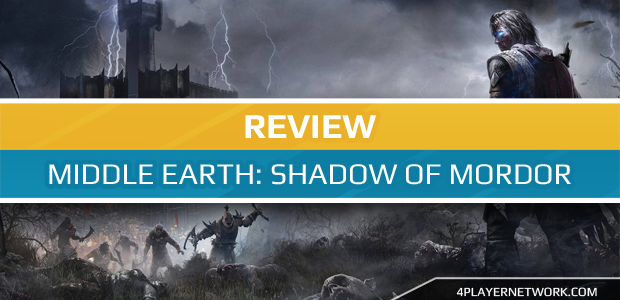
Though we wish it were otherwise, long running video game franchises often lose their way and forget just exactly why they’ve been so popular. Pac Man used to be a simple maze-based collectathon navigator that has since turned into a third person 3D platformer. Resident Evil used to be the go-to series for survival horror and now it’s simply an action-focused gore shooter. And even The Lord of the Rings, best identified as a third person hack-n-slash series in video game form by anyone with a brain, became what they shouldn’t have been.
For The Lord of the Rings, it appears that its time may finally have come again. After several years of Tolkien titles being a RTS after MMO after Lego game after MOBA and being anything but what they are meant to be, many have been left with ring fatigue. Middle Earth: Shadow of Mordor looks to finally provide some much needed course correction. Developed by Monolith Productions, this title arrives at a time in which the developer could really use a strong release as its resume has been less than spectacular over the past six years.
With it having been over a decade since the last proper The Lord of the Rings romp, can Monolith both recapture the classic fun that was the early 2000s titles and restore the crushed faith fans of the developer had when they were making new IPs like FEAR and Condemned?
Publisher: Warner Bros. Interactive Entertainment
Release date: September 30, 2014
Platform(s): Xbox One (Reviewed), PS4, PC, PS3, Xbox 360
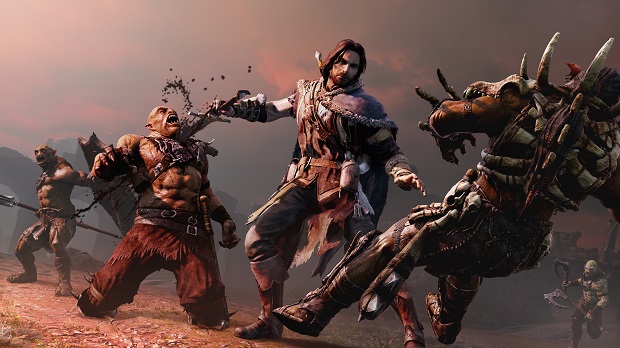
In the Land of Mordor…
For two and a half millennia, the Rangers of Gondor have stood watch at the Black Gate that separates their lands from the haunted realm of Mordor, the site of Dark Lord Sauron’s eventual resurrection. Sometime prior to the events of The Lord of the Rings, the Rangers have grown complacent in the duties and it costs them one dark, stormy night as a horde of Orcs known as Uruks invade. The Black Gate is lost and Talion, one of the Rangers, is executed along with his wife and son in a sacrificial ritual. Talion awakens in another world where he meets a nameless wraith who informs him of his untimely fate. Instead of being allowed to venture into the unknown alongside his family, Talion is instead “banished from death” and has become bound to the wraith, cursing him to walk Middle Earth forever. With Sauron’s power growing and the fate of the world in the balance, Talion and the wraith set out to stop stop the Uruk forces and break the curse, allowing him to reunite with his family in death.
Talion’s journey to take revenge upon the forces of darkness and rid himself of his curse wants to be a great experience. Thanks to the inclusion of the wraith (for whom will not be named due to spoilers), the game becomes an interesting buddy cop title with Talion the less-than-levelheaded swordsman teamed up with the wise, forward-thinking wraith. The dynamic between the two characters is one of caution, tempered trust and determination as the two must join forces to achieve each of their own ends. The characters themselves are well written, well-acted and are worthy of your attention. If anything, they are the best part of the game’s story.
That being said, the narrative of Middle Earth: Shadow of Mordor suffers from several distinct problems. The first of these (and easily the most notable) is pacing. Talion’s tale is one fraught with a mix of slow and fast pacing with nary a moment to be found in-between within the confines of the main storyline. One minute you’re discovering clues to your companion’s background, the next you’re taking on the mid-game boss with little to no pomp or circumstance leading up to the fight. Events in the game simply happen at times without prior warning or build up. The game takes on a two act structure and ends well before it should and does not conclude with any significant resolution at all. This production could have benefited greatly from having a third act but this is for naught.
Pacing is one issue but that can be tolerated but having underdeveloped characters is something that shouldn’t happen in a good story and it is here that Shadow of Mordor has another misstep. Inside of the twenty mission story, our hero encounters new characters whose arcs are either short lived or significantly underdeveloped, making you wonder just exactly how much they contributed to the overall plot and whether they were even worth including along for the ride. Extending the length of the supporting casts’ roles in the game or even simply having them all come together to play a significant part in the final moments of the story would have been a much better plan but sadly this never happens.
Apart from just the length of the characters’ stories, the game is hurt by just how much it panders to the player. At many turns, the game recycles plot elements or purposefully mentions or introduces some character that is significant to the events of The Lord of the Rings without really establishing why they really matter to the overall storyline, instead serving as gameplay vessels by which to further the plot along. Nowhere is the more evident than in the game’s inclusion of Gollum early on. Gollum only serves to give the wraith character more significance than is initially presented and appears only for a couple of missions before outright disappearing until the endgame sequence. This feels very shoehorned in and unnecessary to the continued development of the story and is, in this reviewer’s opinion, only there because the developer wanted to lend credence to the plot.
Aside from these issues, Shadow of Mordor just isn’t a well told story. While our wraith companion is fleshed out, Talion really isn’t and you are forced to visit the game’s appendices to learn more about the man he is, as is the case for many of the games characters and subplots. The game concludes with a lackluster final battle the nature of which mirrors many of the less than stellar compromises many notorious games over the years have concluded on. On top of that, Shadow of Mordor sequel-mongers like it is nobody’s business, all but outright demanding that a second game be created so that Talion’s story can receive a proper conclusion. I sternly believe that Monolith is capable of building a compelling story but, at least for me, this one’s a little half-baked.
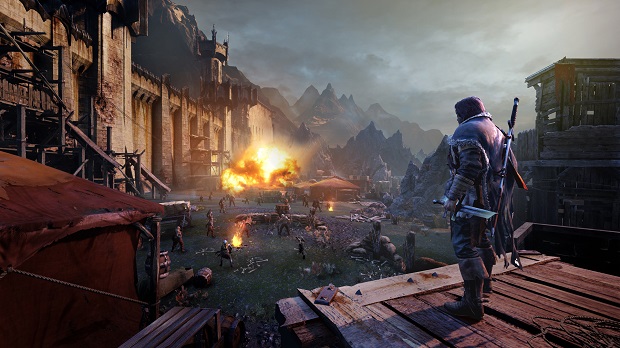
A Sidenote Consideration
Now, let’s be clear: the lore of The Hobbit and The Lord of the Rings by masterful author J.R.R. Tolkien is celebrated by millions upon millions in all forms of entertainment, be it in book, movie or video game form. It is also an exceptionally complicated beast to tackle as each book in the source material is loaded to the brim with mentions of conflicts, characters and events set throughout thousands of years of lore. Heck, even Tolkien’s words said in interviews are taken as pure fact with an example of his claiming that our world exists in parity with Middle Earth and that we seem to be living in near the end of the 6th Age. With all that said, it’s difficult to place how in-step Shadow of Mordor is with the rest of the continuity. What’s curious is just how much Monolith Productions is trying to take a step back from that despite trying to be 1:1 in its visual, audio and design preparations, in coordination with Peter Jackson, Weta Workshop and Middle-earth Enterprises. It is here that I have formed a hypothesis by which I could be 100% wrong and yelled at for. Hear me out.
This begins to become clear once you take a look at the game’s full title and take in the meaning behind it; Middle Earth: Shadow of Mordor. In all its marketing attempts and brand deals with streamers and YouTubers, Warner Bros. has been very specific to establish this game far apart from The Hobbit and The Lord of the Rings. It’s not The Hobbit: Shadow of Mordor or The Lord of the Rings: Shadow of Mordor. It’s simply Middle Earth, meaning that it is set within the full continuity of the core franchise while, at the same time, having its own focus.
But why do that? Well, to me, this seems like a blatant attempt to establish a third brand. By abandoning The Hobbit and The Lord of the Rings monikers and instead using Middle Earth, Monolith and Warner Bros. are afforded legal and story headroom by which they can create the game they want to make with whatever respect they wish to make to the two aforementioned properties inside of their own continuity. This allows them to include the likes of Gollum and others within the confines of this new storyline without compromising the overall narrative of the Legendarium. In other words, think of it this way: this is Monolith and Warner Bros. attempt to do exactly what LucasArts attempted to do with their ill-fated creation that was Star Wars: The Force Unleashed. By introducing Talion and the events set in-between the two sets of novels/movies, Shadow of Mordor allows itself to mess with the core timeline of the Legendarium without facing any repercussions on the part of Tolkien’s estate, New Line Cinema or the fans of the series as a whole. It’s a bold maneuver in my opinion and, if I am indeed correct in this regard, one that I look forward to seeing evolve over the years to come.
What does that mean for fans though? You can expect new interpretations of the events of pretty much any material that Tolkien published as well as whatever the writers at Monolith can think up. Perhaps an exiled Gondor noble by the name of Aragorn decides to take a jaunt through Mordor? Maybe Gandalf the Grey’s eagles become the basis for a new fast travel system in a sequel? Who knows? What it could mean is that series fans will have the opportunity to explore new, interesting material for the first time since Tolkien’s son published some of his unfinished works in 1980. This may, potentially, be the start of a whole new canon for the franchise… or it could all just end up fan fiction if the Tolkien estate or someone else decides to pull a Disney.
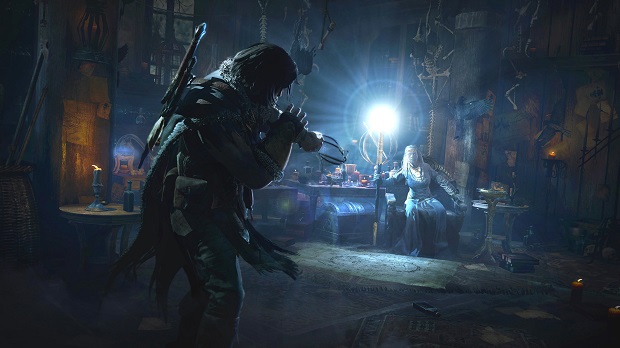
Where the Shadows Lie
From a narrative viewpoint, Middle Earth has some substantial problems that will hopefully be addressed. From a gameplay standpoint, however, the production contains some rather enticing design elements. Though there are some significant flaws to be found, the gameplay department is where Middle Earth finds its stride.
As has been the case for smart developers wanting to create a strong combat system, Shadow of Mordor borrows heavily from the brawler system created by Rocksteady Studios for the Batman: Arkham series. As Talion, players will face off against anywhere between one to a couple dozen Uruk enemies that plague the land at any given time. Players use their sword to engage the enemy and earn combos through timed strikes and careful dodges, the latter of which are telegraph to the player by way of a button prompt. As your combo meter grows, the player is allowed the opportunity to execute finishers that instantly kill normal enemies as well as other abilities such as area of effect stuns. The tools and powers that players can unlock for Talion further enhances the combat and, in the latter third of the game, results in a complicated but very engaging system that makes most encounters a breeze. There is almost nothing to complain about here and should be regarded as the high point of Shadow of Mordor.
The world design featured here and its traversal once again derives itself from an already established franchise, this time coming from the Assassin’s Creed series. Across the two distinctly different semi-large areas contained within, Talion has the ability to travel and maneuver using something very similar to Ubisoft’s parkour system initially introduced in 2007. Players will travel up, down, on top of and around steep cliffs, hills, caves, ruins, slave camps and Uruk strongholds as they seek vengeance against the enemy. Though the controller button arrangement is more Arkham than Assassin, the controls present do the job in making it rather easy to negotiate almost all environments presented.
Monolith also chose to include a stealth system derived from the aforementioned series that does well to compliment both the combat and open world structure of the game. Players can enter a stealth state by pulling and holding the right trigger, causing Talion to crouch down and conceal himself significantly more. Players can take cover from behind corners and within foliage and attract enemies to them for easy one-hit kills. The system is also fairly forgiving as Uruks have a very limited field of vision and take several seconds to react to seeing the player, allowing you precious time to correct your mistake and take down the enemy. Fans of either series will easily adapt to this new system and those who are not will only need minutes to really grasp the mechanics.
Thanks to the curse that binds Talion to his wraith companion, our hero is endowed with supernatural powers by which he can press the advantage against Sauron’s forces. The player will progressively earn many of their skills through gated story missions that greatly increase their power both from a stealth and combat perspective. One fantastically satisfying ability called Shadow Strike allows you to target an enemy from a distance and warp to their location in an instant similar to a Vanguard in the Mass Effect series, allowing you to potentially deliver a killing blow to it depending on how much you upgrade that ability.
At the heart of Talion’s wraith arsenal of powers though is the much publicized Branding ability, a key power that plays a pivotal role in the game’s story. Players eventually earn the ability to brand an enemy, Orc or otherwise, and convert them to your side. This mechanic, while taking more time than it would to deliver a typical death blow upon them, is tremendously satisfying and can be of great strategic help if you find yourself up against a boss or trapped in a particularly hairy situation.
Talions core powers are, as mentioned before, gated behind critical story missions but within his power resume you’ll find an assortment of skills and upgrades to froth over. Skill points earned through experience can be spent on active abilities for both combat and world traversal which greatly enhance Talion’s tactical potential. Passive abilities are applied directly to your arsenal of a sword, dagger and bow through runes that are dropped by minibosses found throughout the game (more on those in a moment). Players can also earn a currency-esque points known as Mirian by completing side missions and bonus objectives. Mirian, in turn, can be spent on unlocking rune slots on your weapons as well as enhancing your wraith abilities with additional health, elf arrow slots and lengthening your time-distortion Focus power. All told, the player can spend hours upon hours completing tasks and earning experience and Mirian through combat to max out Talion’s potential it is very well designed.
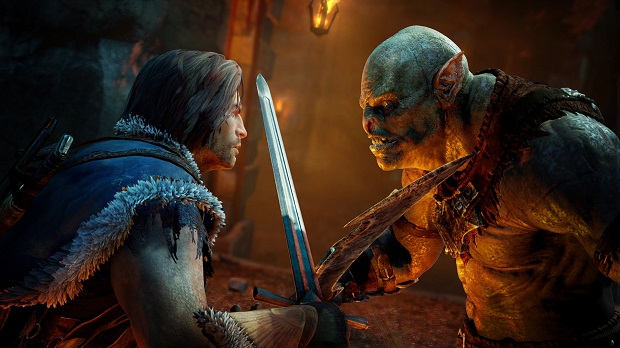
No STARS in the Moon-Lit Sky
At the heart of the Shadow of Mordor experience is the Nemesis System, a detailed attempt at providing a command structure to provide depth to both Sauron’s army as well as Orc society. At the top of the pyramid lie the warchiefs, the commanders and most powerful Orcs to be found in the land. Descending the ranks, you will find a series of decreasingly powerful Orcs who are given the rank of captain. All of the captains will vie for power by completing various actions that occur randomly over time as you continue on in the game, including but not limited to follower recruitment, duels with other captains, trials of ordeal and feasts to celebrate their prestige. All of these events will appear dynamically with each respawn and can be interacted or invaded with to a degree of success or failure depending on the player’s skill.
Captains retain significant skills and abilities that separate them from typical members of Orc society. Each will feature a randomized assortment of strengths and weakness the players must be wary or take advantage of respectfully if they wish to kill or manipulate their rank in the chain of command. Success will result in them either fleeing and stunting their rise through the ranks or even outright eliminating them from pool of contenders. Killed enemies will drop runes that passively enhance Talion’s ability but whose level and significance are determined by the victims’ power and status in Orc society. Low level kills will thus result in less powerful runes while high powered enemies that fall before you will yield higher power or even epic runes that are much desired.
Succeeding in combat against an Uruk warchief or captain is a satisfying accomplishment at almost every turn but it is when you utilize branding upon them that you really begin to see the potential of the Nemesis system. Trading out the rune reward for gaining an ally, you can command your newly acquired ranked minion to perform the feats listed previous as well as have them engage in power struggles with other Orcs, raising their power and thus making them a more potent ally. These two systems, when used in conjunction with one another, are smartly done and will be one of the more common actions you’ll take in the late game.
On the flipside, failing to stop captains from achieving their goals will cause them to game power and thus make them harder to defeat. Death at their hands will increase their power, making them more difficult to defeat in the future and potentially promoting them. Dying at the hands of a standard enemy, which happens to even the best of players, will actually cause that enemy to rise to the status of a captain if a slot so happens to be available, making them a new target of yours.
The dynamics of the Nemesis system are thus widely varied and well thought out, making it a highlight of the Shadow of Mordor experience. With a few small caveats, Monolith has something to be proud of here. That being said, Middle Earth does contain a litany of questionable design choices and overlooked items that will need to be addressed when the game receives its inevitable sequel.
For me, the gameplay structure of earning abilities is a big problem. As stated before, the most significant powers are gated behind story mission and cannot be earned beforehand. This would not normally be a problem for me had Monolith decided to allow the player more time to use Talion’s full arsenal from a much earlier point in the game but as the current product stands, you only have access to all of the abilities once you’ve completed three quarters of the core storyline itself. Branding, the most marketed ability featured in the game that paradigm shifts the combat and Nemesis systems, only comes into play over two thirds of the way through the story missions, which is very disappointing. The developer would have been much better off had players been given at least branding several missions beforehand, preferably just after you move on to the second and final area of the game.
Many would try to argue that this has been done to strong success beforehand and the most prominent example that would be thrown around is, once again, the Batman: Arkham formula. However, this argument is invalidated once you compare the nature of the unlocks in both games and their overall role in each game’s methodology. The Arkham titles, thanks to the unlocks, serve as tools by which to facilitate a Metroidvania-style open world structure, allowing them to serve a purpose outside of combat and the game’s central storyline missions through elements such as Riddler trophies. By contrast, Shadow of Mordor’s gated abilities serve little to no purpose outside of combat and don’t pertain to any unlocks or side activities. Therefore, the current structure for gating these abilities so late into the game serves only to be a detriment to the player and diminishes the overall replay value. Unless you really,reallylike the combat and Nemesis systems, you shouldn’t expect to continue playing all that much once the credits roll.
Combat in the last third of the game doesn’t seem to attend to the branding system either and it is here that I found myself becoming more than a little annoyed. Since players have the ability to kill any of the branded Uruk companions at any time, the combat system doesn’t seem to make distinction between who is branded and who is not. Therefore, in many skirmishes in which I have large numbers of both regular and converted Orcs engaged in combat alongside me, the combat system will not target enemy Orcs over branded ones, instead allowing me to strike my allies when I’m really trying to attack my enemies. It can be incredibly frustrating to end up killing my allies instead of my foes mid-battle, especially when I am forced to content with captains or warchiefs.
Of all the open world games I’ve played over the last few years, Shadow of Mordor is easily the least rewarding for side quest content completion. Despite featuring eight different side activities to engage in, none of them reward the player with any tangible gameplay rewards such as weapon enhancements or stat buffs. Instead, all you get is an achievement or trophy, nothing more. Collecting all 32 Ithildin icons, for example, yields only a small piece of lore and nothing else, making the hours you’ve spent collecting them feel wasted. I find myself looking back fondly at what Ubisoft has been able to include in their Assassin’s Creed titles such as AC2’s The Truth and AC4’s Mayan Armor. In that franchise, the player is rewarded considerably not just with enough lore to keep wiki editors busy for weeks but also palpable gameplay rewards. Monolith dropped the ball in this regard to me.
Other smaller items eat at me as well, though none more than what I have thus far described. Orc society seems very underdeveloped and seems fixated on the tropes of them wanting to gain power, enslave humans and serve Sauron when there simply must be more than that to their entire race. There isn’t much to explore in either region. There is no new game+ feature.
Overall, as great as the combat, stealth and Nemesis systems are, the game has quite a few flaws that can drag down the experience.
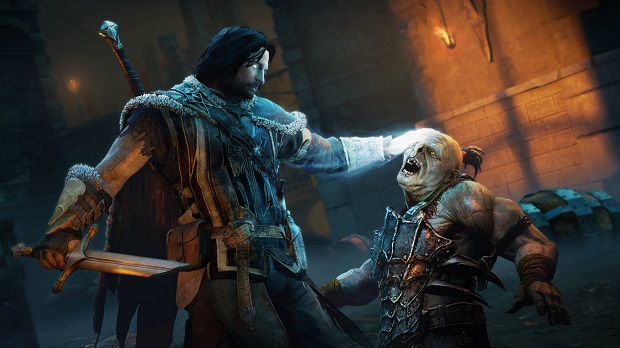
The Ascent of Gravewalker
Middle Earth: Shadow of Mordor spent four years in development behind the scenes at Monolith Productions and the effort clearly has paid off in terms of production value. The developer has done a rather fantastic job of recreating and implementing the world and character design Peter Jackson and Weta Workshop have made over the past decade and a half. No one element seems ill-designed or improperly introduced into the context of a video game and I must tip my hat to Monolith for that.
Nowhere is the depth of the production work made more apparent than when you take a look at the writing and voice work. The writing team did a phenomenal job here creating dialogue that feels embedded in the universe for the main cast, supporting characters and even random enemies. This was no doubt aided greatly by Monolith’s decision to have Christian Cantamessa, the lead writer on Red Dead Redemption, be in charge of writing the game. Though I have aforementioned qualms about Shadow of Mordor’s story progression and character usage, I never got tired of learning more about the world, the events or the characters contained within.
Monolith’s casting choices exemplify the story presentation here. Troy Baker continues his winning streak as Talion with a wide range of emotions to be found in the character’s arc. Veteran actor Alastair Duncan does a great job as Talion’s wraith companion. Even Gollum is well done as Liam O’Brien does a rather excellent job emulating Andy Serkis’ representation of the character. Not a single character, be they main cast or random NPC, feels less than properly voiced in the game and this is something Monolith can be proud of.
In terms of production, you have to hand it to the developer: they did a rather fantastic job making the most authentic Tolkien video game to date.
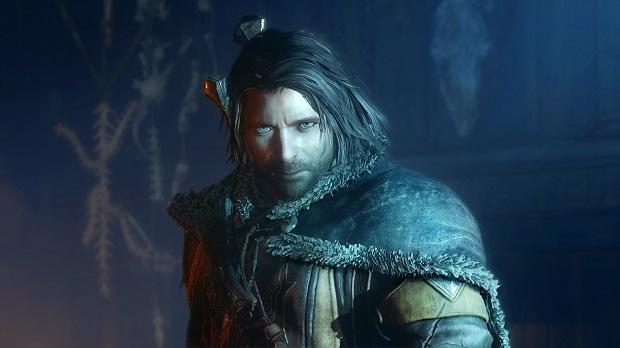
The Road Goes On
When you get right down to it, there is no denying that Middle Earth: Shadow of Mordor is a great game. Thanks to hard work on the part of a veteran developer willing to take an existing franchise in a new direction, we have been presented with the most successful reconsideration of a Tolkien product to date. The characters feel authentic. The gameplay is very well designed. The player feels exceptionally empowered. The world feels ripped straight out of the films. It’s a great Tolkien experience.
Middle Earth is a very fun game to play though it does contain within it some distinct problems, both narratively and gameplay-wise, that should be addressed once Monolith begins work on a sequel. Despite these flaws, it’s more than worth investing your time in and should definitely be on your must-play list in 2014 if you’re an action-adventure fan.
Final Score: 8/10
(80-89%: Great - Only very minor issues get in the way of greatness.)
(Please note that the screenshots above were not captured by the reviewer or the staff at 4PlayerNetwork.com. These images are provided to media outlets by the publisher and should not be taken as indicative of the final visual quality of the game. A review copy was not provided by the publisher.)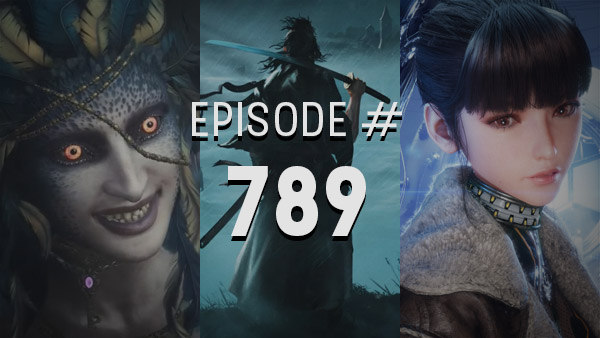
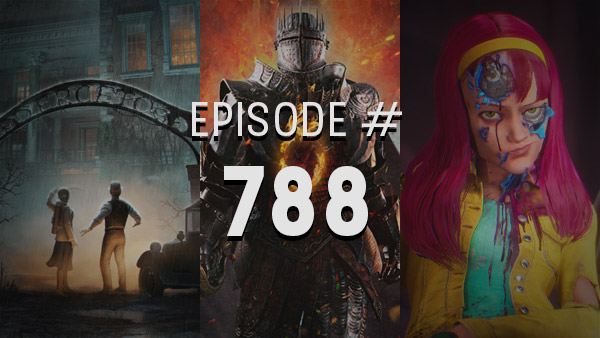
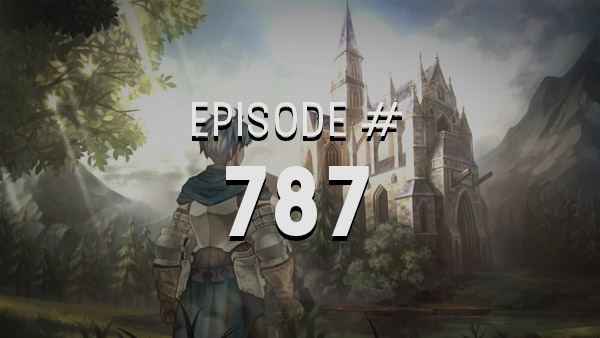
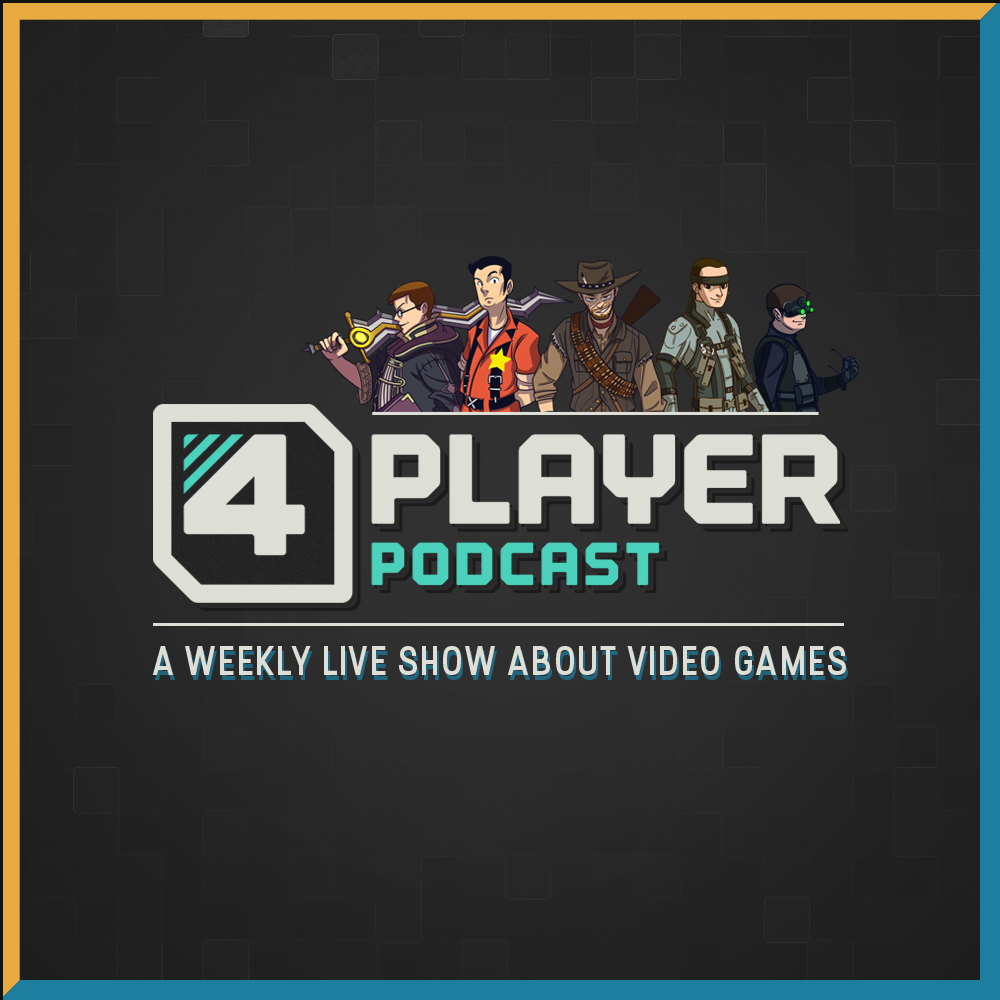
Comments
9 years, 6 months ago
Great review Chris.
9 years, 6 months ago
Great review Chris! Glad to see this game getting good reviews and I can't wait to get it myself.